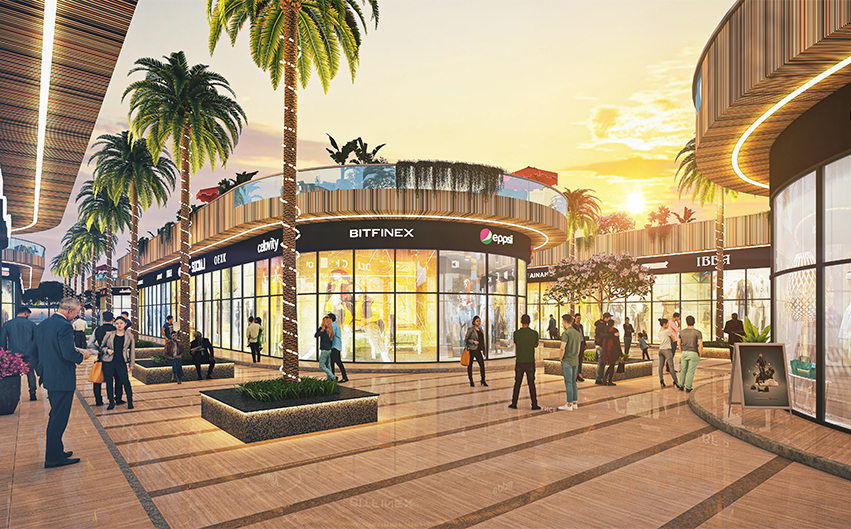The latter half of this decade has witnessed monumental changes in the real estate sector, with the rapidly evolving consumer behaviour and market trends. The segment of real estate that has been affected the most is undoubtedly the retail sector. In the face of unprecedented encroachment by e-commerce platforms, many presumed that the sector’s downward spiral has been incited.
Table of Contents
However, in the midst of an admittedly adverse circumstance, the reopening of workspaces and shops has emerged as a bright spot, lighting up the trajectory to be followed by retail spaces. The contemporary framework, with people cooped up in their houses for months and years on end during the pandemic, has given rise to an intense desire for healthy communication in social zones. In this context, retail spaces are being reimagined and redefined as not just spaces to shop, whose success is determined purely by the location, but as something much more.
Today customers want an experiential retail space, with an array of social zones and FnB avenues in the vicinity. While the rest of the retail spaces are still figuring out how to bridge this gap between customers’ needs and the existing supply, the real estate developer Ganga Realty has already announced their latest high-street retail offering all set to be the blueprint for futuristic retail spaces.
Aptly named ‘Swarnim’, the name of the retail centre means golden which signifies the vision of the realty to provide a new, golden real estate space radiating comfort, luxury, and success. Backed by a team of 1000 professionals who are thoroughly versed in the real estate demography in India, investing in Swarnim is sure to add a high-yielding asset to your portfolio.
Let us briefly discuss some features and advantages of this experiential high-street retail space.
A location that beckons success
One of the prime factors that are crucial to a retail space’s success is its location. It’s no wonder then that the retail spaces that are strategically located are commonly called ‘transit-oriented retail’. Now what makes a retail space’s location advantageous? When a locale permits easy and seamless connectivity to major commercial and residential hubs in its vicinity, and has a sturdy transit mechanism, the retail space is sure to thrive.
Ganga Realty’s Swarnim situated in the propitious, upcoming hotspot in Sohna checks all these boxes. Located in Sector 5 in Ganga Realty’s flagship residential offering, Tathastu, the area has witnessed tremendous transit and infrastructural development within a decade. With the Sohna Elevated Corridor just minutes away from the retail center, it has never been easier to commute to the location.
The town of Sohna has in an unprecedented fashion metamorphosed into a locale witnessing rapid industrialization with the most famous companies moving to this emerging micro market. Some connectivity advantages of this Swarnim are:
- At a short distance of 5 minutes from the Delhi-Mumbai Corridor
- The Gurugram Railway Station is barely 20 minutes away
- The buzzing business centre of central Gurugram and Golf Course Road is 10 km away
- The Kundli-Manesar-Paliwal Expressway is at 7 km away
- Only 30 minutes drive from the thriving micromarket of New Guurgram.
- 30 minutes away from Indira Gandhi International Airport
- Leading educational institutions like G.D. Goenka School and K.R. Manglam University in the vicinity
- In the proximity of a residential catchment of approximately 25,000 families, with 3,000 families projected to reside at Tathastu
- Proposed Developments:
- Upcoming Industrial Model Township which will potentially employ tens of thousands
- The Haryana Orbital Rail Corridor connecting Paliwal to Sonipat
An Impressive Infrastrucure
The high-street retail space, Swarnim is a sight to behold, with a magnificent wide frontage and retail spaces laid out in an ingenious capsule layout. This engineering feat has provided a unique opportunity to the shop owners at Swarnim, as the layout allows for maximum visibility and access to each and every one of them. This access is reinforced even further with the astutely designed drive-through to provide seamless vehicular access to all the shops.
Spread across 2,50,000 sq. ft, this expansive retail space provides you with space for not just shopping avenues but also for restaurants, cafes, and other recreational spaces such as multiplex. With shops that are provided with private rooftops, located on the ground floor that is easily accessible via a four-sided 12 meters service road, the Swarnim retail space is the perfect integration of aesthetics and functionality.
Opportune Investment Horizon:
Swarnim presents you with a unique amalgamation of retail space that is located in a thriving catchment with high potential footfall, a progressive transit framework, and arterial connectivity. In addition to this, Ganga Realty has quite prudently tapped into the needs of modern customers and developed retail spaces that are primarily developed to provide an experiential journey. With a keen knowledge and expertise in meeting the changing customer desires, the realty envisions Swarnim developing into a space that fosters an exhilarating social experience with zones that foster communication and the formation of healthy human networks.
With the option to both lease or buy retail space, Swarnim provides you with a beneficial prospect of investing in a locale situated right in one of the most sought-after regions in Northern India. Investing in this retail space with the backing of a realty like Ganga, which is founded on the principles of elevating the built environment in India, is sure to add a lucrative asset to your portfolio.
To summarise, the high-street retail space Swarnim, located in Sohna caters to all the criteria you would want a propitious investment in retail space to meet. From shopping avenues to fine dining to cafeteria, here you can make your dream to be a business owner come to life, and that too at one of the most thriving sub-city of Gurugram District.








